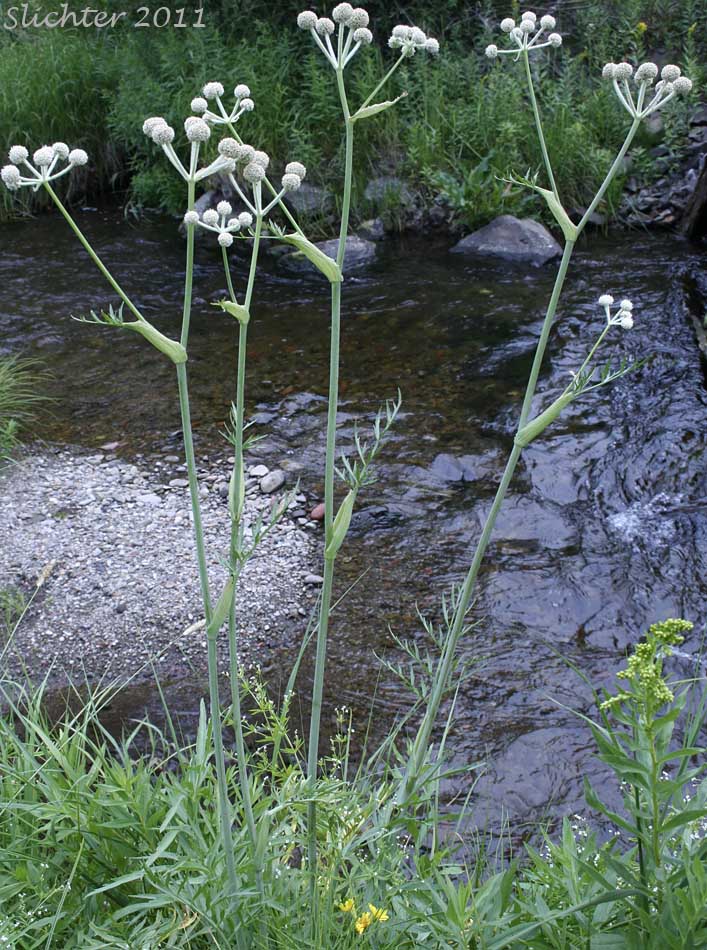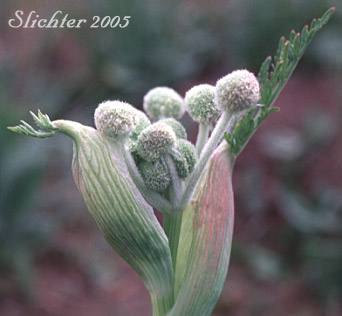
 The
photo at right shows the wide petiole bases of the upper stem leaves and the emerging
umbel of rangers button as seen about 1 mile above Jackman Park along the North
Loop Road of the Steens Mt in southeastern Oregon.........July 17, 2000.
The
photo at right shows the wide petiole bases of the upper stem leaves and the emerging
umbel of rangers button as seen about 1 mile above Jackman Park along the North
Loop Road of the Steens Mt in southeastern Oregon.........July 17, 2000.
Also known as swamp white-heads and woolly-head parsnip, rangers button is a tall, upright perennial wildflower with stout, erect stems from 50-180 cm high. The herbage of the lower stems and leaves ranges from nearly glabrous to rough in texture while the inflorescence typically has numerous, short, matted or tangled wooly hairs. The leaves, which measure 30-80 cm long, are long petiolate with the blades 2-3 times pinnately dissected. The leaflets are linear, lanceolate or oblong in outline with entire to more typically toothed and parted margins. Individual leaflets measure from 4-10 cm long. The base of the petioles may also be fairly strongly inflated.
The inflorescence consists of one to several umbels which have 4-18 rays of unequal lengths, measuring from 1-5 cm long. Bracts are lacking at the base of the umbel, but thin, tomentose bractlets may be found at the base of the individual umbellets. The umbellets are well separated and globular and compact in outline, measuring from 6-12 mm in diameter. The flowers are sessile and white or occasionally purplish in color. The tomentose fruits are wedge-shaped, with the tip squared off. The ribs are prominent with the dorsal ones narrowly winged and the lateral ones more prominently winged, the wings becoming wider toward the top of the fruit. Individual fruits measure from 3-5 mm long.
Rangers button is typically found in moist meadows, on streambanks, and open swamps from the foothills to elevations as high as 2800 meters in the mountains.
Rangers button may be found from the east slope of the Cascade Mts. of central Oregon east to the Strawberry and Wallowa Mts. of north-central and northeastern Oregon and into central Idaho. It is found southward through the mountains of Lake County, Oregon to the White Mts. and Sierra Nevada of California and east to the Steens Mt. of southeastern Oregon and to the mountains of Humboldt County in northwestern Nevada.